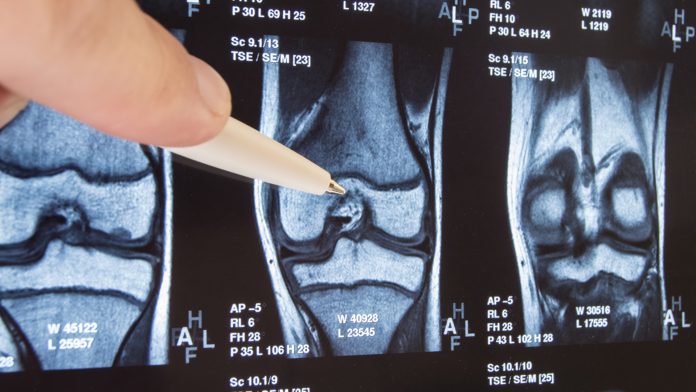
An advanced design technique, used in aerospace and automotive industries, could revolutionise personalised medical devices, such as knee implants.
Researchers at the University of Birmingham, working with design software specialists at the Manufacturing Technology Centre (The UK National Centre for Additive Manufacturing), and the University Hospitals Birmingham have used an approach called Generative design to produce a knee implant that can treat osteoarthritis.
The proof-of-concept paper detailing the manufacturing process has been published in Progress for Additive Manufacturing.
What is generative design?
Generative design uses Artificial Intelligence (AI) and Machine Learning to designs that can be manufactured to be optimal for their intended use. For example, for a car, this may be a component that is both lighter and stronger which leads to increased fuel efficiency and lower CO2 emissions. This study is the first known to use this technique for a biomedical implantable device.
Designing a knee implant
There are several advantages to applying this technology to medical devices. For example, current knee implants are manufactured in a limited number of shapes and sizes. Whilst 3D printing techniques are becoming widespread to make bespoke knee implants, it doesn’t take into account the constraints imposed by surgical planning, the patient’s weight or their activity levels. These factors are crucial to understanding how a patient’s anatomy and a knee implant will interact and are important to the knee implant’s design and rehabilitation.
Postgraduate and lead researcher, Sanjeevan Kanagalingam, of the University of Birmingham, said: “The ‘one-size-fits-all’ approach used in knee surgery to treat osteoarthritis can result in major complications, primarily due to overengineered implant designs and therefore limits surgical adoption and patient outcomes. This AI integrated design interface allows us to configure tailored surgical planning par3d prinameters and take personal biomechanical information into account, and synergistically combine it with the embedded manufacturing intelligence to model medical-grade titanium implants that are specific to each patient.”
Principal Investigator and Senior Lecturer, Dr Lauren Thomas-Seale, also at the University of Birmingham, added: “The combination of the academic, industrial and clinical knowledge of team working on this project, and the vast design space offered by Generative Design, has yielded implant designs beyond anything that has been seen before. Such an approach, noting the diversity of the project team, has enabled the development of a design process which can take into account the many differences between patients, for example, the variation between male and female body mass.”
The researcher’s next steps will be to test the devices mechanically to see how they bend and flex under loads. If this stage is successful, they will eventually move to clinical testing.
Kanagalingam concluded: “This generative design approach not only increases the patient-specificity of bone fixations but also serve as a novel, versatile framework in the design of load-bearing patient-specific implants for the hips, shoulders and maxillofacial surgeries.”









